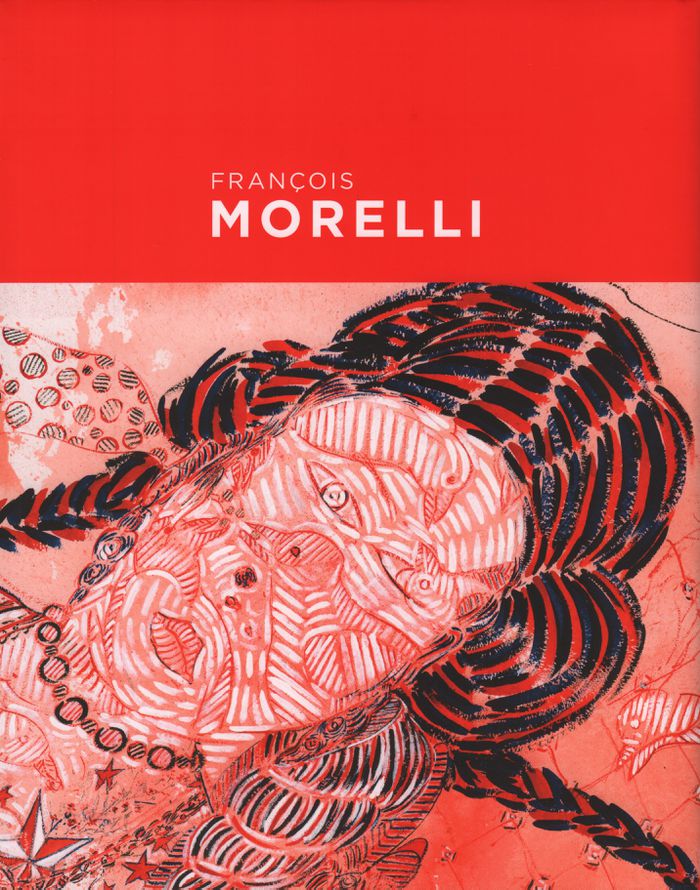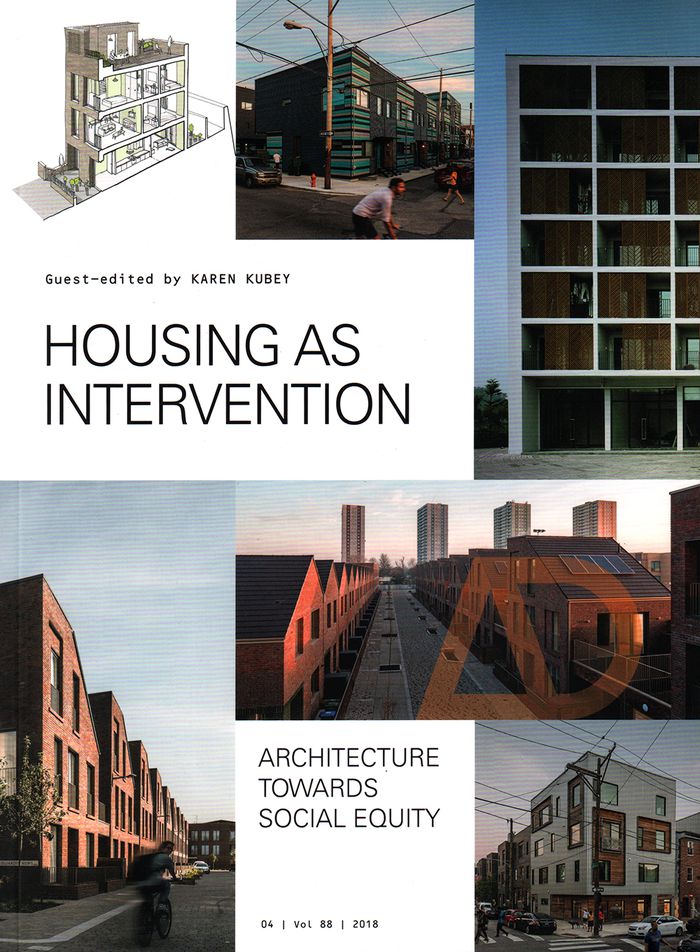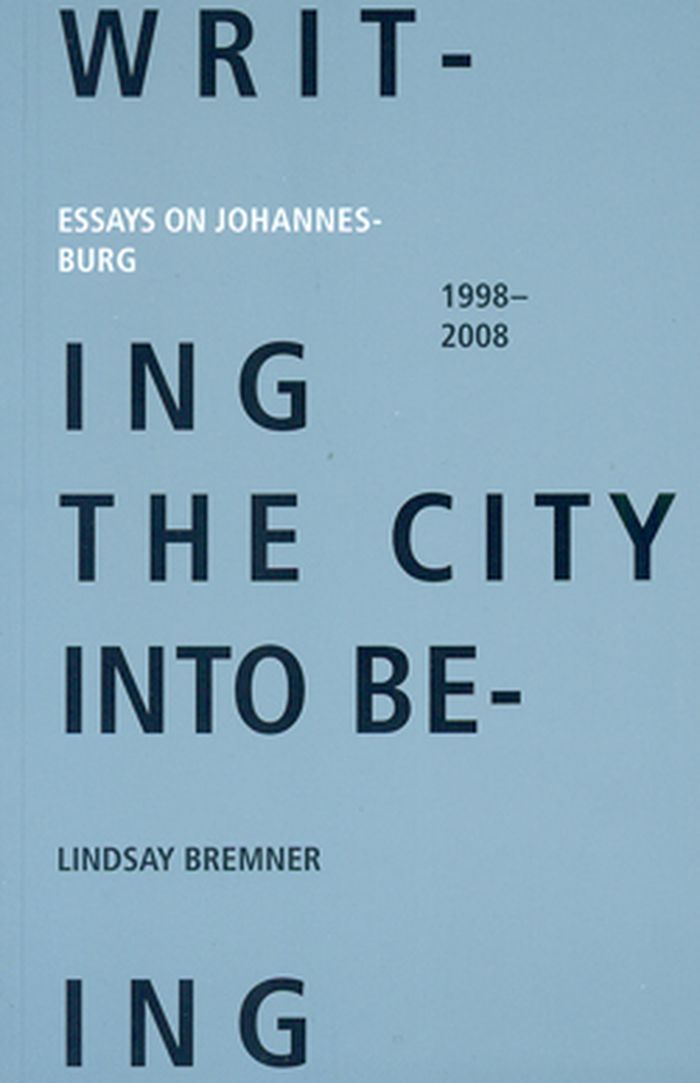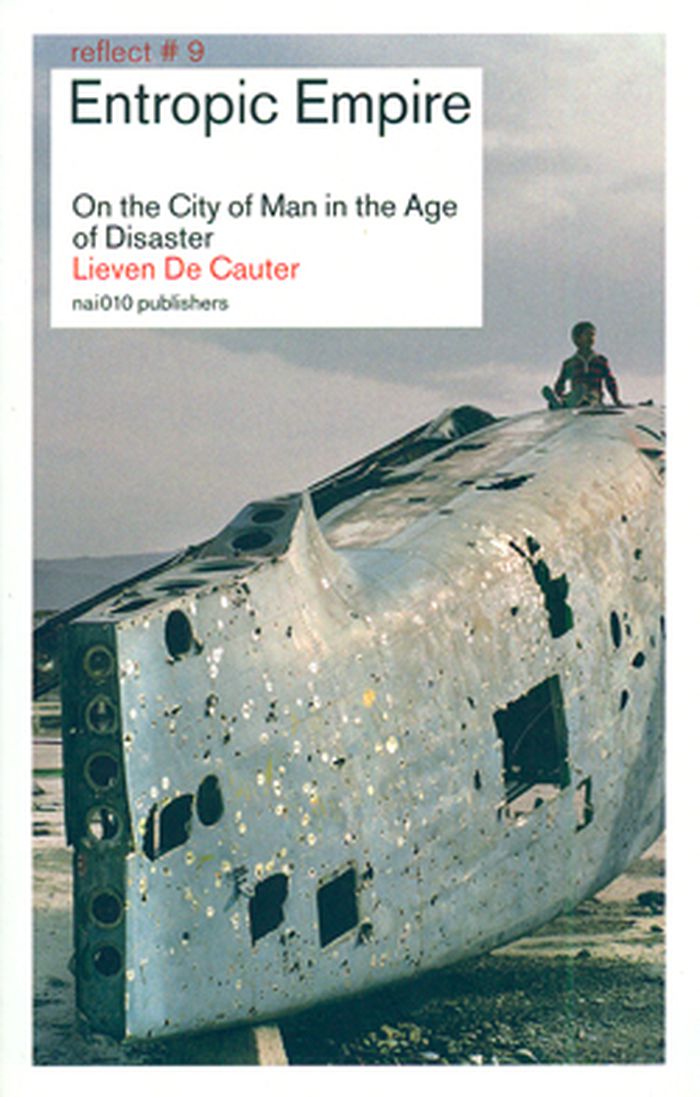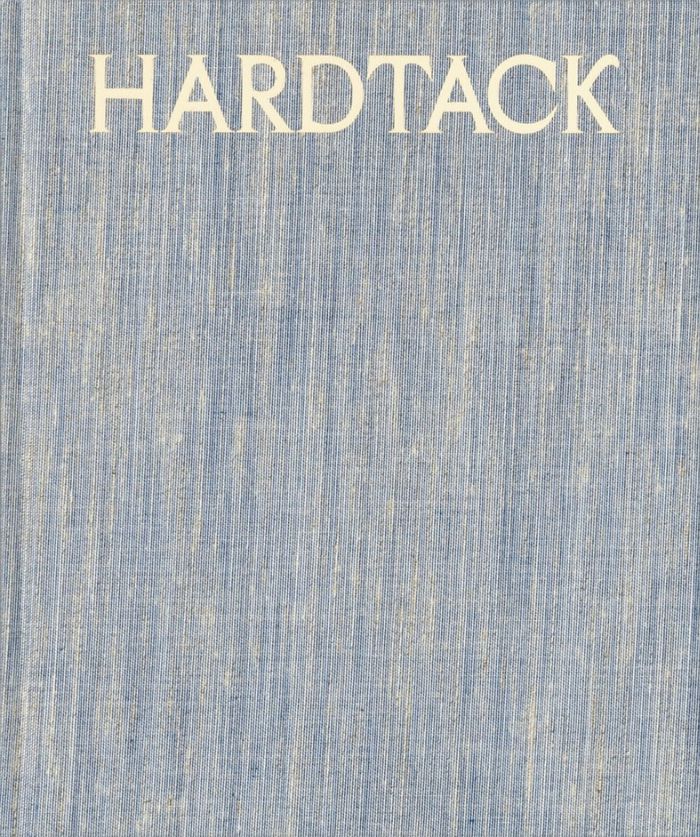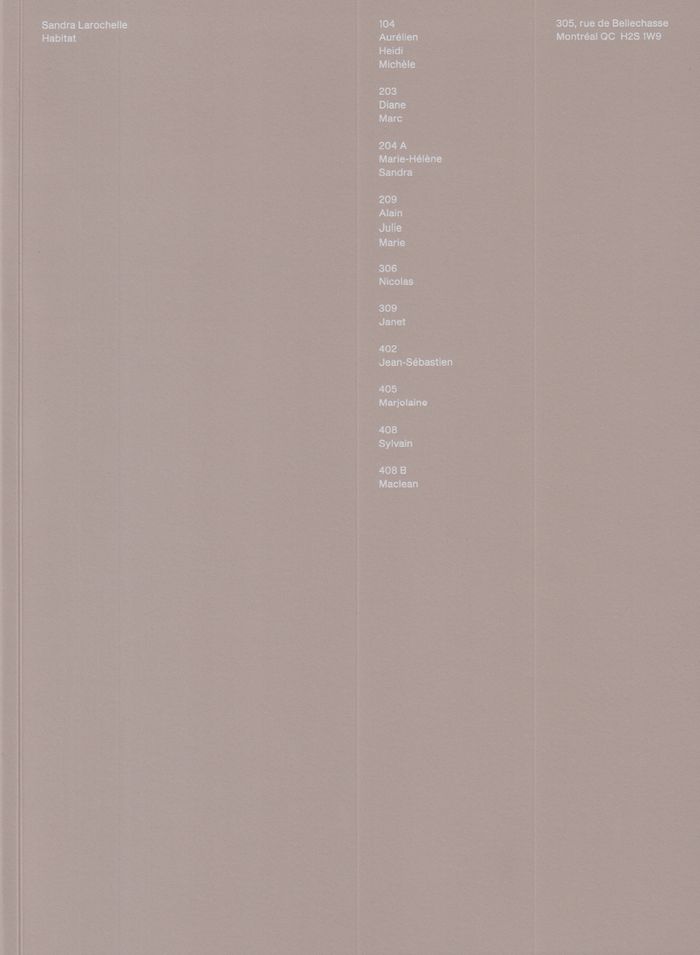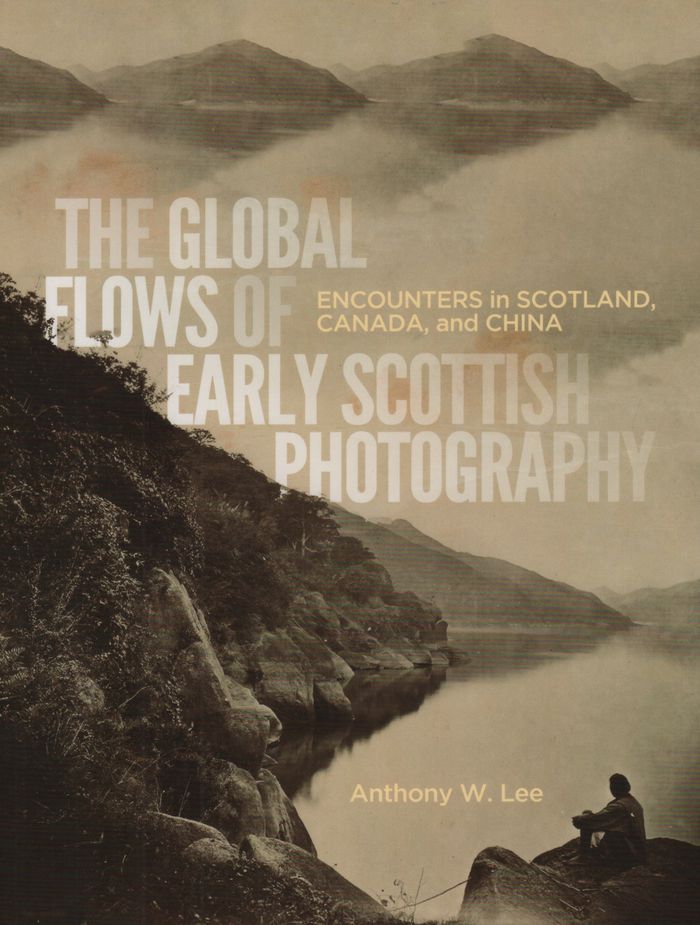François Morelli
$100.00
(available in store)
Summary:
Le 1700 La Poste présente une exposition solo dédiée à l’artiste montréalais François Morelli. La carrière exceptionnelle de François Morelli se déploie sur quatre décennies, investissant sur plus de six disciplines artistiques à leur manière à travers le temps. Du dessin libre à l’estampe, de l’action publique à la performance et à l’installation in situ, l’œuvre de(...)
November 2017
François Morelli
Actions:
Price:
$100.00
(available in store)
Summary:
Le 1700 La Poste présente une exposition solo dédiée à l’artiste montréalais François Morelli. La carrière exceptionnelle de François Morelli se déploie sur quatre décennies, investissant sur plus de six disciplines artistiques à leur manière à travers le temps. Du dessin libre à l’estampe, de l’action publique à la performance et à l’installation in situ, l’œuvre de François Morelli trouve son fondement dans une pratique quotidienne du dessin, croisée d’une volonté constante d’intervenir dans le tissu social. À travers une démarche très polyvalente, François Morelli s’intéresse aux notions de passage, de migration et de transformation. Il investit le corps comme sujet d’étude tant au niveau personnel qu’au niveau social et historique. L’œuvre traite des frontières entre mémoire collective et mémoire personnelle, des rapports entre le politique et le domestique, entre le tragique et le grotesque.
$45.00
(available to order)
Summary:
Across the world, the housing crisis is escalating. Mass migration to cities has led to rapid urbanisation on an unprecedented scale, while the withdrawal of public funding from social housing provision in Western countries, and widening income inequality, have further compounded the situation. In response to this context, forward-thinking architects are taking the lead(...)
Housing as intervention: architecture towards social equity
Actions:
Price:
$45.00
(available to order)
Summary:
Across the world, the housing crisis is escalating. Mass migration to cities has led to rapid urbanisation on an unprecedented scale, while the withdrawal of public funding from social housing provision in Western countries, and widening income inequality, have further compounded the situation. In response to this context, forward-thinking architects are taking the lead with a collaborative approach. By partnering with allied fields, working with residents, developing new forms of housing, and leveraging new funding systems and policies, they are providing strategic leadership for what many consider to be our cities’ most pressing crisis. Amidst growing economic and health disparities, this issue of AD asks how housing projects, and the design processes behind them, might be interventions towards greater social equity, and how collaborative work in housing might reposition the architectural profession at large.
Collective Housing
books
$42.00
(available in store)
Summary:
The complex legacy of this most notable period is discussed from a different perspective by each contributor. Peter S. Reed details the rise of modern architecture during the war—housing designs that used the latest ideas in prefabricated construction methods, lightweight materials, innovative technologies, and a corporate and institutional aesthetic that helped(...)
World War II and the American dream
Actions:
Price:
$42.00
(available in store)
Summary:
The complex legacy of this most notable period is discussed from a different perspective by each contributor. Peter S. Reed details the rise of modern architecture during the war—housing designs that used the latest ideas in prefabricated construction methods, lightweight materials, innovative technologies, and a corporate and institutional aesthetic that helped popularize modernism as the appropriate image of American industrial might and corporate success. Robert Friedel documents the development of new materials, especially plastics, and discusses techniques for employing traditional materials in novel ways. Margaret Crawford explores the struggle of women and blacks for public housing. Finally, Michael Sorkin, architect and writer, explores the migration of certain values and aesthetics from the necessities of war to the choices of peace. Among these are images of speed, camouflage, ruin, totalization, and flight.
books
April 1995
Architectural Theory
$34.95
(available to order)
Summary:
Writing the City into Being is Bremner’s collection of essays, spanning more than a decade of work on Johannesburg. It is both an unflinching analysis of the characteristics of a city and a work of imagination – a bringing of the evasive city into being through writing. Johannesburg has become a touchstone in critical thinking on the development of the(...)
Writing the city into being: essays on Johannesburg
Actions:
Price:
$34.95
(available to order)
Summary:
Writing the City into Being is Bremner’s collection of essays, spanning more than a decade of work on Johannesburg. It is both an unflinching analysis of the characteristics of a city and a work of imagination – a bringing of the evasive city into being through writing. Johannesburg has become a touchstone in critical thinking on the development of the twenty-first-century city, attracting scholars from around the world who seek to understand how cities are changing in the face of urban migration in all its myriad forms and the inflow of foreign capital and interest. Writing the City into Being is an important book for those seeking to understand cities in a rapidly changing and fragmenting world. Lindsay Bremner is a guide to the city of Johannesburg, and one of its most incisive commentators.
Architecture since 1900, Africa
$32.50
(available to order)
Summary:
What with global warming, the war on terror, extreme political polarization, an unstoppable demographic explosion and migration, anarchy and chaos are becoming parts of our world system in hitherto unprecedented ways. What to call the planetary state of emergency we are now entering - a “New World Disorder,” perhaps, or “Entropic Empire”? In his latest book, the Dutch(...)
Reflect # 9 : entropic empire, on the city of man in the age of disaster
Actions:
Price:
$32.50
(available to order)
Summary:
What with global warming, the war on terror, extreme political polarization, an unstoppable demographic explosion and migration, anarchy and chaos are becoming parts of our world system in hitherto unprecedented ways. What to call the planetary state of emergency we are now entering - a “New World Disorder,” perhaps, or “Entropic Empire”? In his latest book, the Dutch philosopher, art historian, writer and activist Lieven De Cauter suggests that an entropic empire is created by opposing forces or philosophical poles: the “state of exception” (tyranny) and the “state of nature” (anarchy). Entropic Empire: Considerations on the Planetary State of Emergency is part post-historical sci-fi scenario and part philosophical consideration on the eternal return of prehistory (the “state of nature”). For De Cauter, the simple but troubling question is: are we falling out of history?
Critical Theory
$63.00
(available to order)
Summary:
This book is a comprehensive investigation into photographic works by artists from the African continent and its diaspora. Taking the politics of the “colonial gaze” as its starting point, Events of the Social looks at the diverse complexity of the nineteenth-century archive through a selection of vintage portraits, cartes de visite, postcards and album pages. Three(...)
Events of the social: portraiture and collective agency
Actions:
Price:
$63.00
(available to order)
Summary:
This book is a comprehensive investigation into photographic works by artists from the African continent and its diaspora. Taking the politics of the “colonial gaze” as its starting point, Events of the Social looks at the diverse complexity of the nineteenth-century archive through a selection of vintage portraits, cartes de visite, postcards and album pages. Three generations of African artists from the 1940s till now then chart the changing features of African societies through portraiture, exploring notions of the self, gender, sexuality, race, social status and politics. The book also examines landscape and the built environment, showing how architecture and spatial planning convey social order and ideology while reflecting experiences of migration, colonialism, war and industrialization. Another group of artists, born after the mid-1970s, explores issues of social identity, lineage, questions of belonging and personal experiences.
Photography Collections
Rahim Fortune: Hardtack
$98.95
(available to order)
Summary:
Flour, water, and salt. These are the sole ingredients that make Hardtack: a Civil War-era food long-associated with survivalism, land migration, and its extremely long shelf life. Drawing from this history as a metaphor for the long-enduring nature of Black culture and traditions, Hardtack uncovers the roots that tie Fortune's native landscape to the conflicts and(...)
Rahim Fortune: Hardtack
Actions:
Price:
$98.95
(available to order)
Summary:
Flour, water, and salt. These are the sole ingredients that make Hardtack: a Civil War-era food long-associated with survivalism, land migration, and its extremely long shelf life. Drawing from this history as a metaphor for the long-enduring nature of Black culture and traditions, Hardtack uncovers the roots that tie Fortune's native landscape to the conflicts and nuances associated with the post-emancipation Americas. In the follow-up to his breakout monograph I can't stand to see you cry, Fortune borrows from the language of vernacular and archival photography to interrogate the historical relationship of his community to photography; rooted in the landscape, Fortune often uses sites of historical and cultural interest as a guide but not a subject, implying the deep ties that bind modern Black communities resiliently to their regions, in the face of both adversity and joy.
Photography monographs
$39.95
(available to order)
Summary:
In ''¡Presente!: the politics of presence'' Diana Taylor asks what it means to be physically and politically present in situations where it seems that nothing can be done. As much an act, a word, an attitude, a theoretical intervention, and a performance pedagogy, Taylor maps ''¡Presente!'' at work in scenarios ranging from conquest, through colonial enactments and(...)
¡Presente!: the politics of presence
Actions:
Price:
$39.95
(available to order)
Summary:
In ''¡Presente!: the politics of presence'' Diana Taylor asks what it means to be physically and politically present in situations where it seems that nothing can be done. As much an act, a word, an attitude, a theoretical intervention, and a performance pedagogy, Taylor maps ''¡Presente!'' at work in scenarios ranging from conquest, through colonial enactments and resistance movements, to present moments of capitalist extractivism and forced migration in the Americas. ''¡Presente!''—present among, with, and to; a walking and talking with others; an ontological and epistemic reflection on presence and subjectivity as participatory and relational, founded on mutual recognition—requires rethinking and unlearning in ways that challenge colonial epistemologies. Showing how knowledge is not something to be harvested but a process of being, knowing, and acting with others, Taylor models a way for scholarship to be present in political struggles.
Critical Theory
$65.00
(available in store)
Summary:
Être locataire du 305 rue de Bellechasse lorsqu’un changement de main enclenche une migration forcée. Voir se vider au compte-goutte ce lieu ayant abrité des ateliers d’artistes et des travailleurs créatifs pendant plusieurs années. Dans la précipitation, vouloir garder des images de ce lieu que j’adore. Réaliser que cette documentation était entamée depuis la minute où(...)
Sandra Larochelle: Habitat. 305 rue de Bellechasse
Actions:
Price:
$65.00
(available in store)
Summary:
Être locataire du 305 rue de Bellechasse lorsqu’un changement de main enclenche une migration forcée. Voir se vider au compte-goutte ce lieu ayant abrité des ateliers d’artistes et des travailleurs créatifs pendant plusieurs années. Dans la précipitation, vouloir garder des images de ce lieu que j’adore. Réaliser que cette documentation était entamée depuis la minute où j’y ai mis les pieds. Offrir à d’autres occupants d’aller à leur rencontre avant leur départ, en ne sachant pas encore ce que ça donnerait. Revenir avec des centaines d’images d’atelier et des réflexions plein la tête. Présenter une série d’images plus près du photoreportage dans le cadre de l’exposition extérieure 305 à l’été 2020. Et maintenant vous proposer ce livre photo, un objet personnel qui incarne mon passage et ma sortie de cette adresse. Ce que j’y ai laissé et ce que j’en garde.
Consignment
$55.00
(available to order)
Summary:
Almost immediately after the invention of photography, Scottish photographers took their clunky cameras on the road to capture the stories of peoples and communities touched by the forces of British imperialism. For the next thirty years, their journeys would take them far from their homes in the Lowlands to the Canadian wilderness and the treaty ports and rivers of(...)
The global flows of early Scottish photography
Actions:
Price:
$55.00
(available to order)
Summary:
Almost immediately after the invention of photography, Scottish photographers took their clunky cameras on the road to capture the stories of peoples and communities touched by the forces of British imperialism. For the next thirty years, their journeys would take them far from their homes in the Lowlands to the Canadian wilderness and the treaty ports and rivers of China. ''The Global Flows of Early Scottish Photography'' is about the interplay between these photographers' ambitions and the needs and desires of the people they met. Anthony Lee tracks the work of several famous innovators of the art form, including D.O. Hill and Robert Adamson in Edinburgh; the Scottish immigrants William Notman and Alexander Henderson in Montreal; John Thomson in Hong Kong; and Lai Afong. Lee reveals their pictures in the context of migration and the social impact wrought by worldwide trade and competing nationalisms.
Photography Collections
